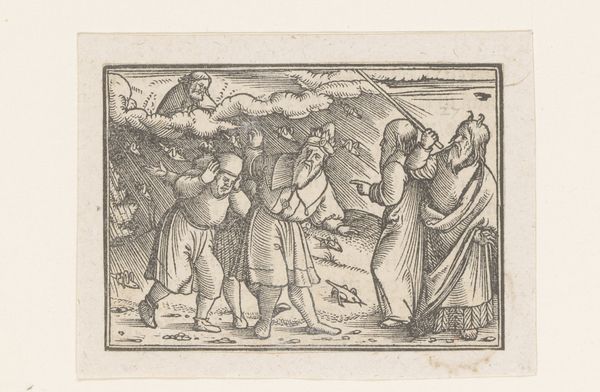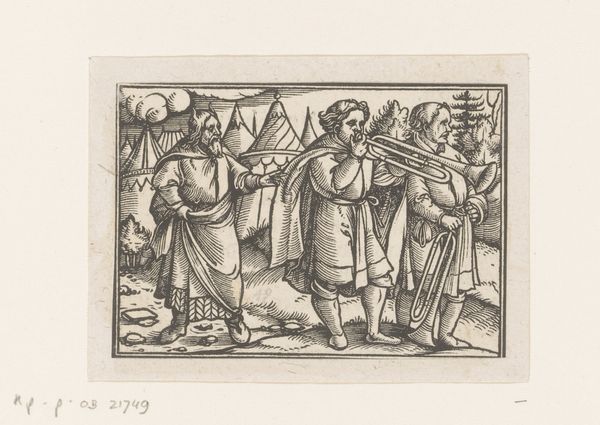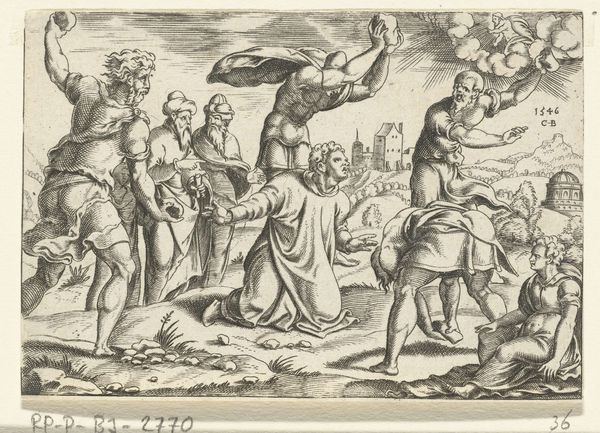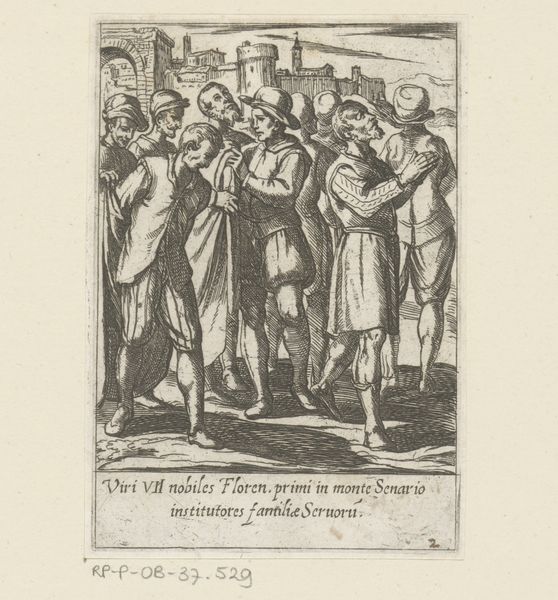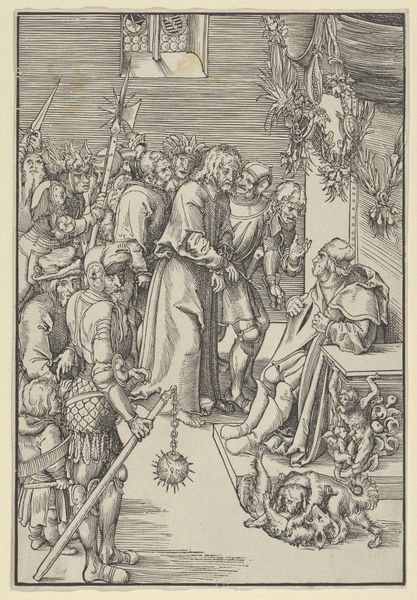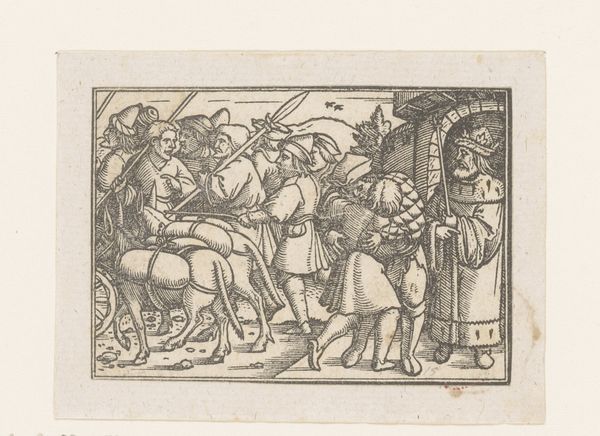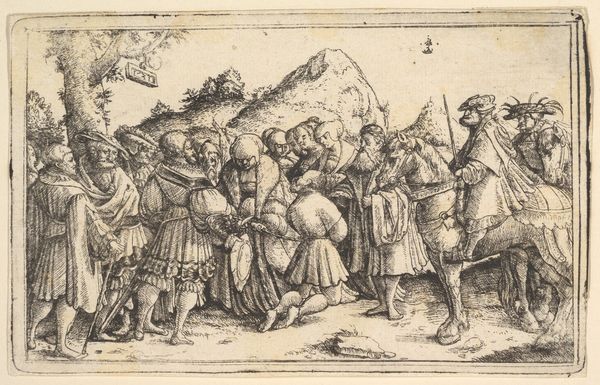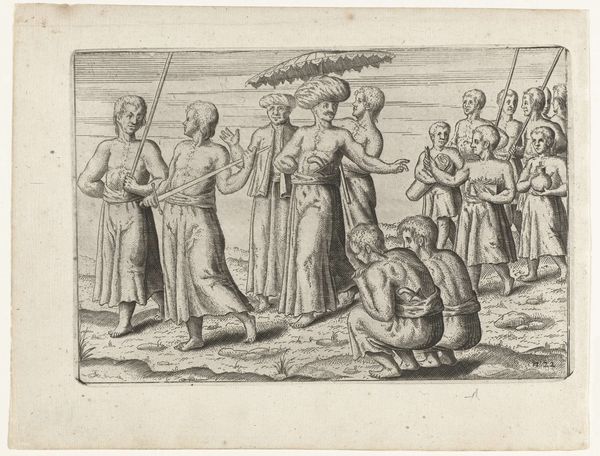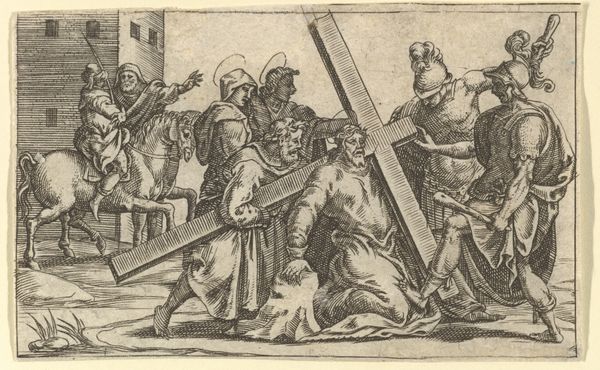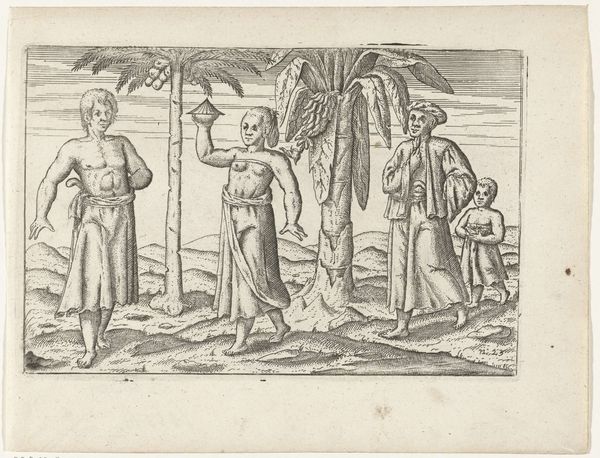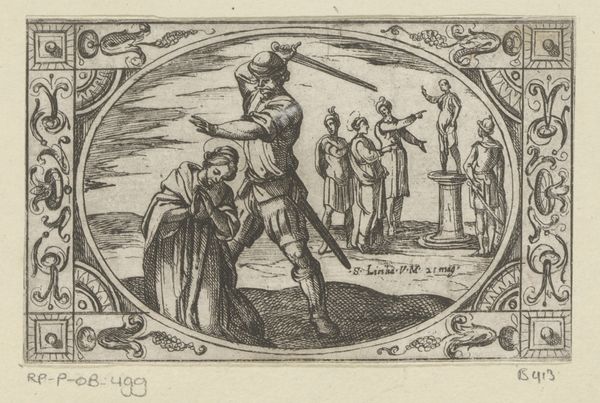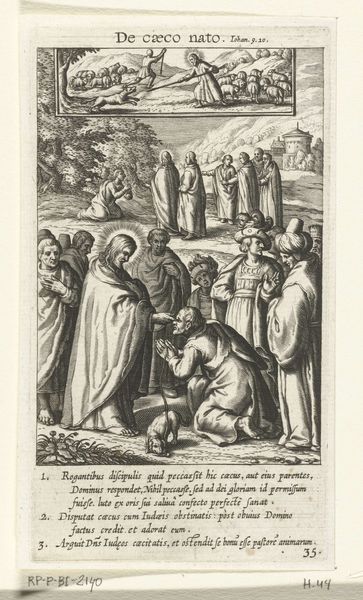
print, woodcut
#
narrative-art
# print
#
pen sketch
#
figuration
#
woodcut
#
history-painting
#
northern-renaissance
Dimensions: height 60 mm, width 85 mm
Copyright: Rijks Museum: Open Domain
Curator: Let’s discuss this intriguing print from 1522, titled "Mozes zegent een geknielde man," or "Moses Blesses a Kneeling Man." It resides here at the Rijksmuseum and is an anonymous work, but it exemplifies the aesthetic sensibilities of the Northern Renaissance. Editor: My initial reaction is that there's an almost brutal quality to the linework; the deep cuts into the wood give the figures a powerful presence despite the small scale of the print. It seems less concerned with idealized beauty and more about conveying raw emotion. Curator: Indeed. The graphic quality is quite striking. Consider the composition itself; a study in contrasts. We see a clear foreground with Moses and the kneeling figure, offset by the group of onlookers in the midground, receding into a distant landscape, articulated via minimal graphic marks. It establishes a visual hierarchy. Editor: Right. And I'm drawn to the technical aspects, imagining the process of creating this image, the laborious act of carving into wood, removing material rather than adding it, making a deliberate incision, and considering how many prints would’ve been pulled from this very block, dispersing this image widely. What about the artist, perhaps someone usually employed in less 'high art' activities? Curator: That brings a certain perspective on value and labour, I think. From a semiotic point of view, look at Moses himself – radiating divine authority by virtue of his attire and gesture. The light is stark, falling selectively, highlighting Moses while rendering his entourage partially in shadow. His dominance over the scene is meticulously encoded into the print’s very design. Editor: Precisely, the sharp contrasts draw the viewer's eye towards Moses’ gesture, a physical assertion of divine power, and really ask the question of the role the woodcutter played. The actual artisan whose labor transferred the idea onto a matrix and from which multiples are derived. Curator: What stands out to me, reflecting upon this woodcut, is the inherent tension between representation and abstraction—the ways the artist uses simplified forms and graphic marks to communicate such a profound and evocative scene. Editor: And I’m left pondering on the materiality of this work – the textures both implied and real. We tend to divorce ourselves from the physical, yet this print's origins remind us artmaking is always connected to the social and the labor of creation.
Comments
No comments
Be the first to comment and join the conversation on the ultimate creative platform.
